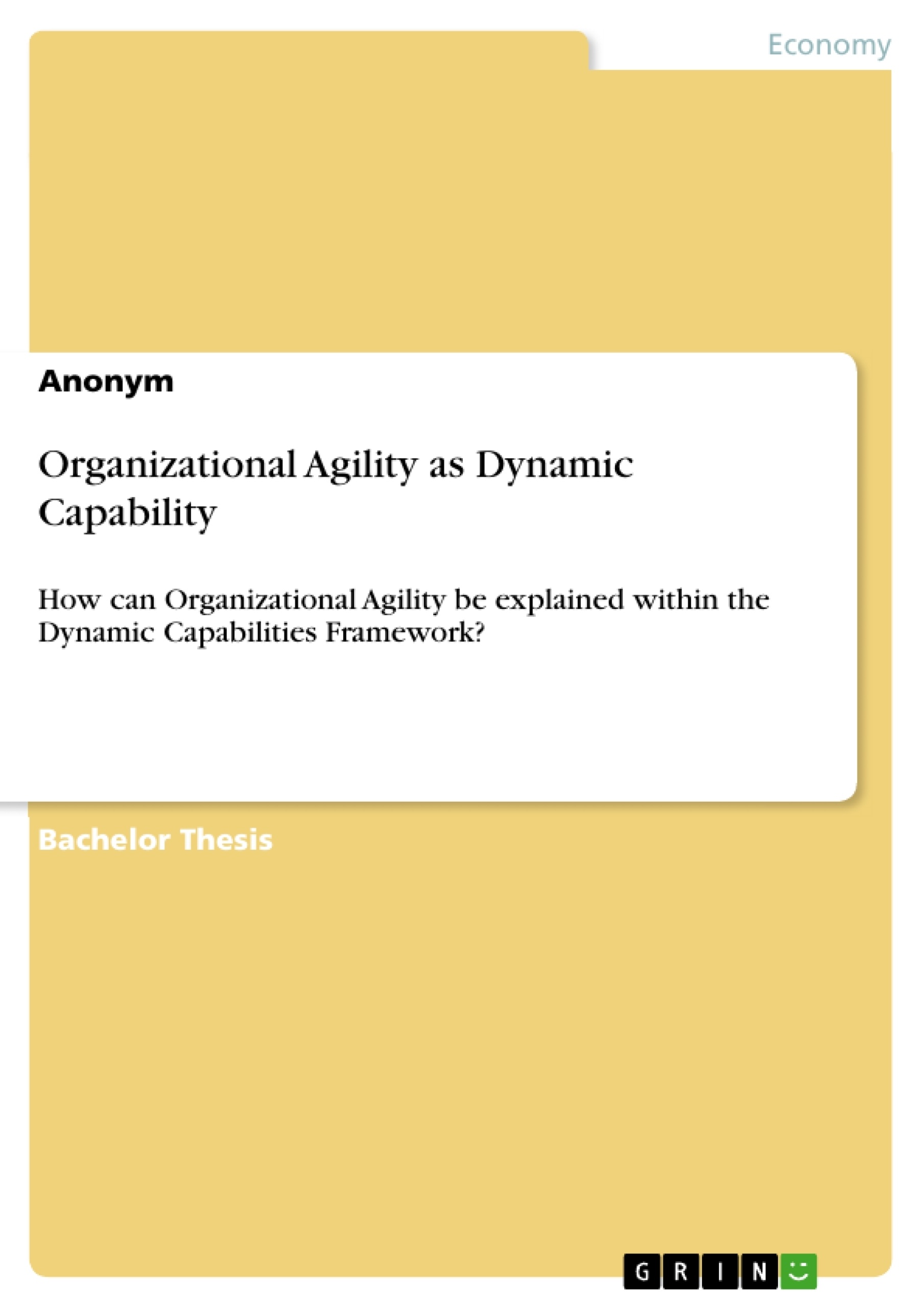In this thesis, I want to examine this approach and answer the question of how organizational agility can be explained within the dynamic capabilities framework. To do that, I’m going to first closely examine both frameworks and present attempts that try to clarify each concept. Afterward, I will present the approach of how organizational agility has been implemented into the dynamic capabilities framework and showcase a practical application that uses the dynamic capabilities framework to explain the creation of agility.
Superior business performance and competitiveness are key objectives for any firm. Organizational agility has been pointed out as one option for achieving this goal, especially in today’s business environment characterized by uncertainty and volatility. Online searches for “agile transformation” yield around 90 million hits and a Google trend analysis shows a steep positive incline in interest over the past 10 years. According to a survey done by McKinsey in 2020, 75% out of 2190 enterprises would describe themselves as agile or are in the progress or preparation of transforming their business towards agility. This is a global phenomenon, most industries have been identified as transforming towards agility with the financial services and telecom industry leading the way.
Inhaltsverzeichnis (Table of Contents)
- Introduction
- Environmental Change and Organizational Survival
- Organizational Agility
- Introduction
- Different Perspectives on Agility
- Definition
- Conceptualizing Organizational Agility
- Agility Drivers
- Agility Capabilities
- Agility Enablers
- Agility Dimensions
- Concept Overview
- Organizational Agility and Performance
- Critique
- Dynamic Capabilities
- Introduction
- Theoretical Background
- Definition of Dynamic Capabilities
- Microfoundations of Dynamic Capabilities
- Introduction
- Sensing
- Seizing
- Transforming
- Dynamic Capabilities and Firm Performance
- Critique
- Relationship between Organizational Agility and Dynamic Capabilities
- Introduction
- Commonalities between Organizational Agility and Dynamic Capabilities
- Organizational Agility as Dynamic Capability
- Critique
- Realizing Organizational Agility through Sensing, Seizing and Transforming
- Introduction
- Effectuating Agility through Sensing
- Effectuating Agility through Seizing
- Effectuating Agility through Transforming
- Teece’s Principles for Entrepreneurial Managers
- Conclusion
- Limitations and Future Research
Zielsetzung und Themenschwerpunkte (Objectives and Key Themes)
The main objective of this thesis is to examine how organizational agility can be explained within the dynamic capabilities framework. This involves a detailed analysis of both frameworks and their respective attempts to clarify the concepts of organizational agility and dynamic capabilities.
- Organizational agility as a key factor for achieving superior business performance and competitiveness
- Conceptualizing organizational agility and its relationship to different perspectives and definitions
- Dynamic capabilities as a framework for understanding organizational change and adaptation
- Exploring the relationship between organizational agility and dynamic capabilities
- Analyzing how organizational agility can be realized through sensing, seizing, and transforming capabilities
Zusammenfassung der Kapitel (Chapter Summaries)
- Introduction: This chapter sets the stage for the thesis by highlighting the importance of organizational agility in today's dynamic business environment. It discusses the widespread adoption of agile methods and the growing interest in agile transformation. It also raises concerns about the conceptual clarity of organizational agility and the lack of easily implementable research.
- Environmental Change and Organizational Survival: This chapter delves into the relationship between environmental change and the need for organizational survival. It argues that organizations must adapt to survive and thrive in uncertain and volatile environments.
- Organizational Agility: This chapter provides a comprehensive overview of the concept of organizational agility. It explores different perspectives on agility, defines the concept, and presents a holistic model of organizational agility. This chapter also examines the relationship between organizational agility and performance.
- Dynamic Capabilities: This chapter examines the framework of dynamic capabilities, which are organizational capabilities that enable firms to adapt to rapidly changing environments. It discusses the theoretical background of dynamic capabilities and their microfoundations, which include sensing, seizing, and transforming.
- Relationship between Organizational Agility and Dynamic Capabilities: This chapter explores the relationship between organizational agility and dynamic capabilities, highlighting the commonalities and differences between the two concepts. It argues that organizational agility can be viewed as a specific form of dynamic capability.
- Realizing Organizational Agility through Sensing, Seizing and Transforming: This chapter delves into how organizational agility can be realized through the application of sensing, seizing, and transforming capabilities. It presents a framework for understanding how these capabilities can be effectively used to achieve organizational agility.
Schlüsselwörter (Keywords)
This thesis explores the concepts of organizational agility and dynamic capabilities. It focuses on examining the relationship between these two concepts, analyzing how organizational agility can be operationalized within the dynamic capabilities framework, and exploring the implications for achieving superior business performance and competitiveness.
- Quote paper
- Anonym (Author), 2022, Organizational Agility as Dynamic Capability, Munich, GRIN Verlag, https://www.grin.com/document/1378961



